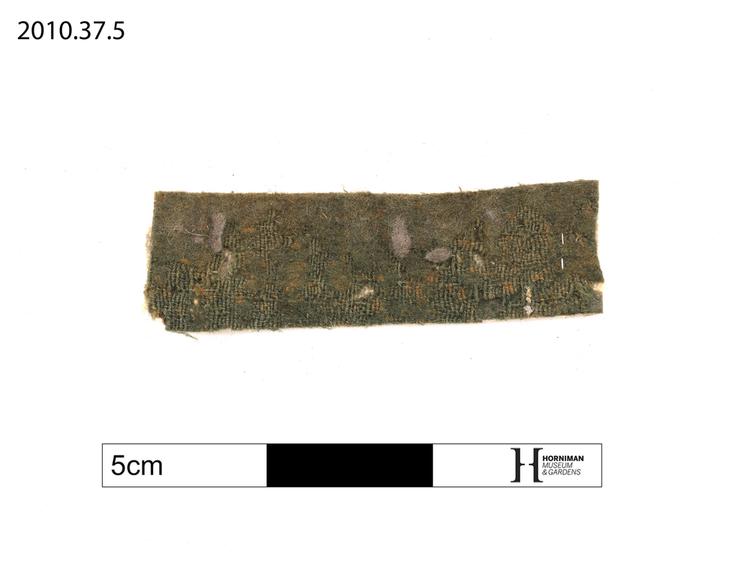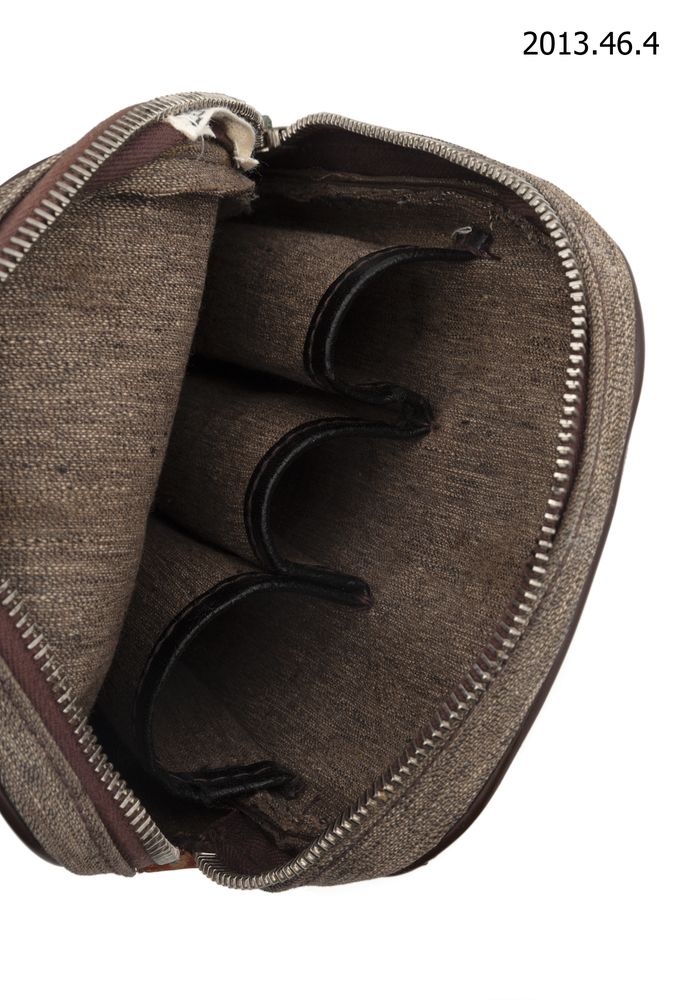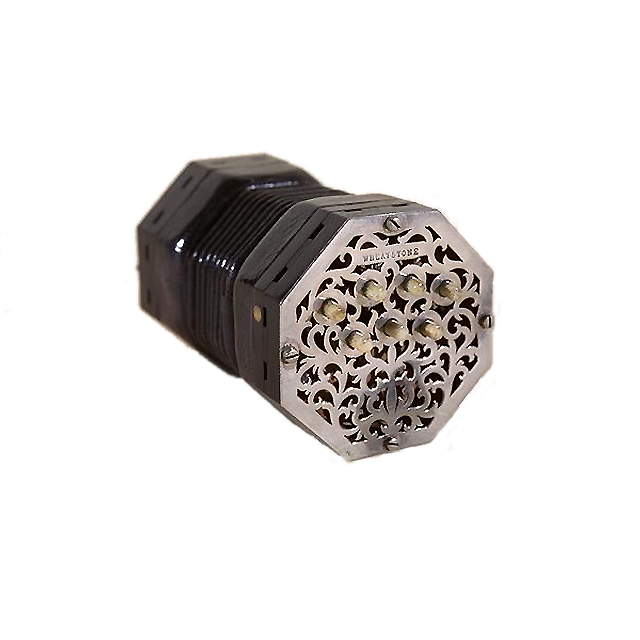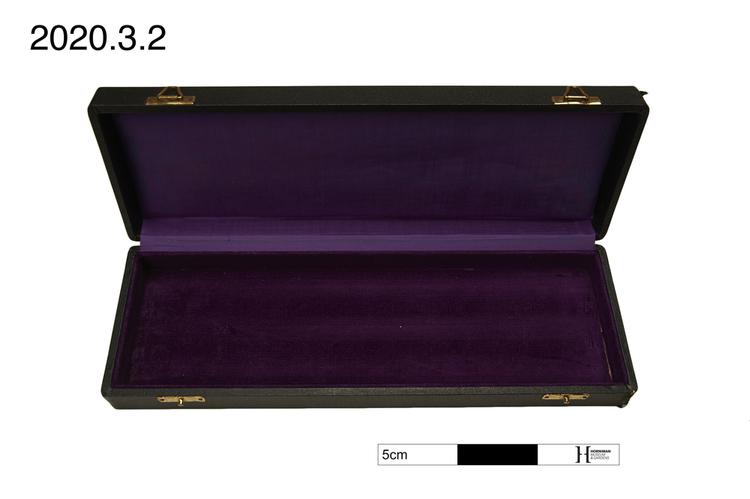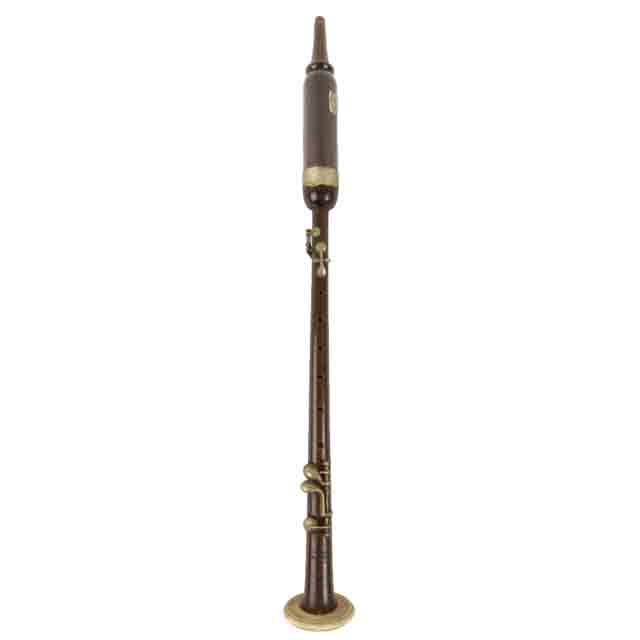
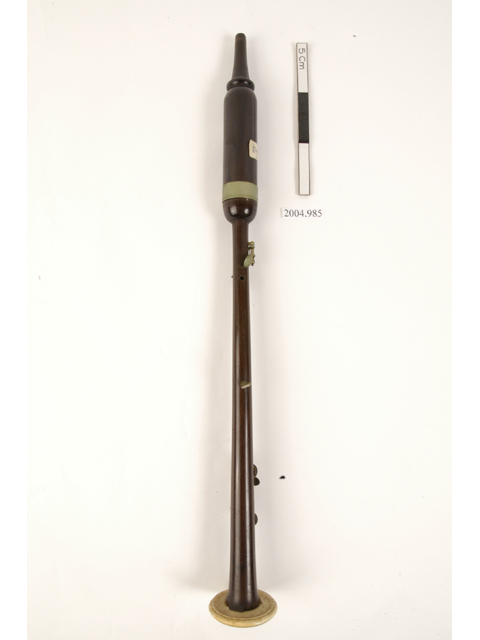
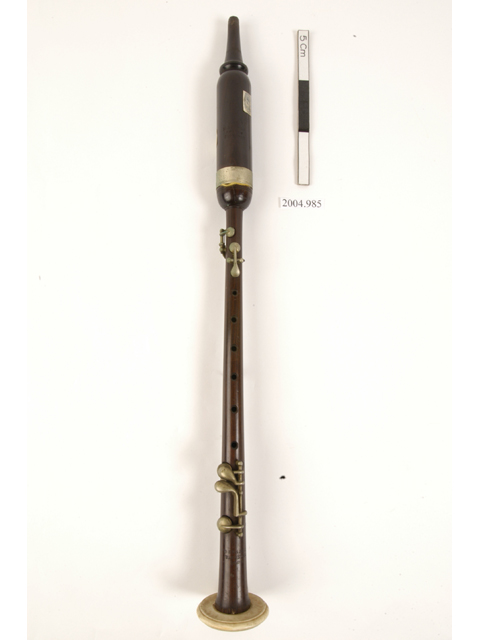
Practice chanter. Cocuswood with German silver keys, one German silver ferrule and ivory sole. Fingering and key work correspond to those of the Brian Boru pipes. Four pillar mounted keys with saltspoon cups and leather pads. Six tone holes. Wind cap stamped: H.STARCK/LONDON/PATENTEE; Body joint stamped: H.STARCK/PATENTEE/LONDON
Although based in London, Henry Starck was an important figure in the development of the Irish bagpipes. In the early 20th century there was a revival of interest in the Irish war-pipe, an outdoor bagpipe used in Ireland until the 18th century. In 1908 Starck patented the Brian Boru bagpipe design see (2004.1213), which he named after a 10th-century Irish king. Although loosely based on the war-pipe, the new instrument had four key-covered holes added to increase the number of pitches available. This chanter has the same fingering as the Brian Boru bagpipes and was designed as a practice instrument to introduce performers to the new key arrangement.



